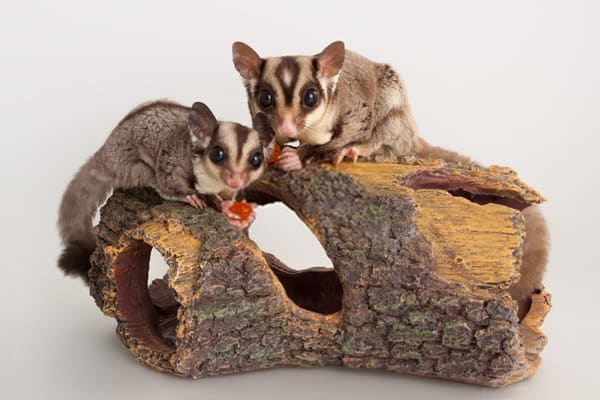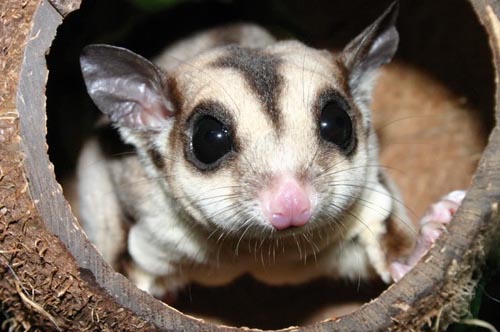

When a glider family is established they become very bonded, what exactly does that mean? Simply, they are a part of each other's pack and they will live together for their whole lives. Don’t force your gliders together, this will only cause stress. If at any time you feel uncomfortable or like your gliders just are not getting along, put them in their separate cages and try again another day. It takes time and patience and is completely dependent on your gliders. Keep an eye on your babies for the next couple of days and separate them if you notice any aggressive behaviors.ĭo not rush this process. Give them two separate sleep pouches in the cage so they can decide if and when they would like to sleep together.Ĩ. If all goes well and you are confident in placing your gliders together clean the cage and wash all toys to create a neutral area. If your gliders are getting along at this point you can give them some treats to share.ħ.

Separate your gliders into their pouches if any physical altercations arise.Ħ. What you don’t want is any aggressive behaviors like grabbing or lunging.

If all goes well, you can then open both pouches slightly and allow your gliders to see each other face to face.ĭon’t worry if they start to crab at each other, this type of communication is normal and expected. If there is no grabbing, biting, or crabbing you can then switch.ĥ. After you have mixed their scents, you can now take one glider's tail and let the other smell it. Then allow each baby to smell the other's scent.Ĥ. Take their pieces of cloth and rub them on the opposite glider. Collect your gliders in their own pouches with a piece of cloth from their cages and place the pouches next to each other.ģ. During the day when your gliders are less active, and calm is the best time to do this.Ģ. Start by choosing a neutral space such as a counter, couch, or bonding tent. After a few days to a week of doing this, you can start the physical introductions.ġ. Over the first few days, swap out their toys and pouches with one another and move their cages slightly closer each day. When you first bring your new glider home you should have a separate cage set up about 6 inches away from your established gliders cage. You should always have equal pairs, or more females than males. The males may turn on each other as they mature, attempting to assert dominance over the colony. It is also not recommended to keep multiple males with just one female. You will need to keep an eye out for any aggressive behavior and be ready to relocate your more submissive glider if any problems arise. However, this is the best pairing as it eliminates the feeling of competition.Ī female/female pair will be unpredictable and may fight as they are also naturally territorial. If you are wanting to pair two males, you will need to get them both neutered for their own safety.Ī male/female pair will breed and have babies, we recommend you neuter the male if you are wanting to avoid this. They can become aggressive and territorial toward one another. Great!Īn intact male/male pairing is not ideal unless they were raised together from babies. So, you have had a single glider for a while, and you feel like it’s time to get them a friend. Your babies can go right in a cage together and start getting to know each other. If you purchase two young baby sugar gliders at the same time and roughly around the same age, you most likely won’t encounter any need to do an introduction. For now, focus on gaining their trust and making them feel secure. Holes in cabinets, holes in walls, or holes near plumbing fixtures.īonding: It is important to acquire your glider as a baby and carry them in your shirt pocket or in a bonding pouch for several hours a day for at least two to three weeks.

Sugar glider lifespan windows#
Open windows and doors are easy ways for your glider to get out. Keep your gliders out of the kitchen while you are cooking, stovetops, toasters, coffee pots, light bulbs, and hot pots can all injure your glider.Īny space your glider can squeeze into may create a potential issue or hazard. Insects are a natural food for sugar gliders, so always make sure to clean up any dead bugs around the house that might have been killed by pesticides. Your glider can drown, they can't swim!Īir freshener, candles, cleaning chemicals and sprays - Sugar gliders have a great sense of smell and a very curious personality, so they will automatically be drawn to anything that smells sweet. Toilet, sinks, bathtubs, buckets, swimming pools, and even open pots of liquid on countertops, make sure to keep the doors closed and put lids on everything before you let your gliders out to play each day.


 0 kommentar(er)
0 kommentar(er)
